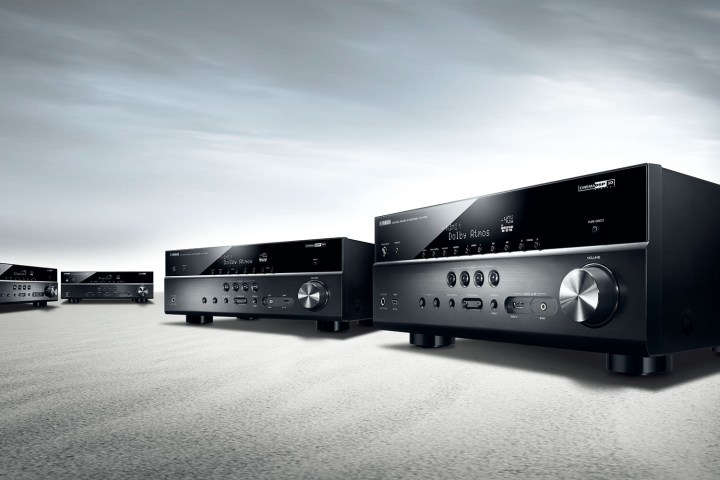
“The Yamaha RX-V 83 Series of A/V receivers provide an affordable way in which to achieve the ultimate in movie, music, and gaming experiences,” Bob Goedken, Yamaha AV division general manager, said in a statement. “Factor in compelling upgrades such as TIDAL and Deezer streaming services, enhanced MusicCast capabilities, and Dolby Vision, and this becomes a very exciting lineup. For entertainment enthusiasts looking for more than a black box, these A/V receivers will certainly be the heart of their home entertainment system.”
There are four models in the new line: The 7.2-channel RX-V683 and RX-V583, and the 5.1-channel RX-V483 and RX-V383. All of the new receivers support 4K Ultra HD passthrough, including High Dynamic Range (HDR) and BT.2020. HDR support isn’t limited to the open HDR10 standard, as both Dolby Vision and Hybrid Log Gamma are expected to arrive in a firmware update later this year, so whatever
While the main differences between the different models is wattage, there are a few others. The two 7.2-channel models support the Dolby Atmos and DTS:X object-based surround sound formats, something that is impossible in a 5.1-channel receiver. The 5.1-channel receivers also feature fewer HDMI inputs than their 7.2-channel counterparts.
The top-of-the-line RX-V683 will sell for $650, while the RX-V583 will retail for $550. These two 7.2-channel models will be available in May. The RX-V483 will sell for $450, while the RX-V383 is priced at $300, with both models becoming available in April.
Editors' Recommendations
- Marantz’s new Cinema series AV receivers are a stylish way to go 8K
- Denon celebrates its 110th birthday with powerful 8K AV receiver
- Gigabyte leaks AMD RX 5600 XT in new Eagle series graphics card lineup


